
The Royal Regiment of Canada is a Primary Reserve infantry regiment of the Canadian Army based in Toronto, Ontario, part of 4th Canadian Division's 32 Canadian Brigade Group. Today, the regiment has a total of three companies:

The Nova Scotia Highlanders is a reserve infantry regiment of the Canadian Army. It is part of 36 Canadian Brigade Group, 5th Canadian Division.

The British Columbia Regiment is a Primary Reserve armoured reconnaissance (recce) regiment of the Canadian Army; the regiment is subordinate to 39 Canadian Brigade Group of the 3rd Canadian Division. Established in 1883, it is the oldest military unit in Vancouver, British Columbia. It parades at the Beatty Street Drill Hall at the corner of Dunsmuir and Beatty in downtown Vancouver. The regiment has been variously designated as garrison artillery, rifles, infantry, and armoured, but has been reconnaissance since 1965. It has received 41 battle honours in its history, and has been a unit of the Royal Canadian Armoured Corps since 1942.
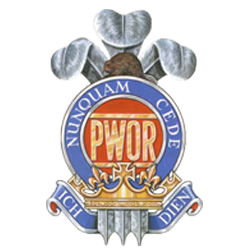
The Princess of Wales' Own Regiment (PWOR) is a Primary Reserve infantry regiment of the Canadian Forces.
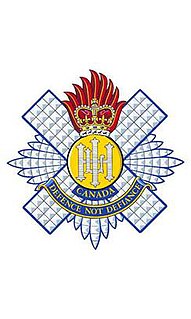
The Royal Highland Fusiliers of Canada is a Primary Reserve light infantry regiment of the Canadian Army, with companies in Cambridge and Kitchener, and is an infantry sub-unit of 31 Canadian Brigade Group, headquartered in London, Ontario. The Duke of York, as a member of the Canadian Royal Family, acts as Colonel-in-Chief. Previously, this post was held by The Princess Margaret, Countess of Snowdon.
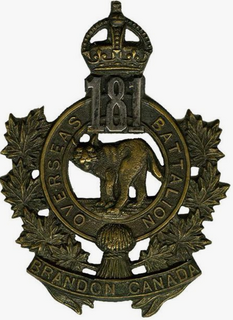
The 181st Battalion (Brandon), CEF was a unit in the Canadian Expeditionary Force during World War I.
The 208th Battalion, CEF was a unit in the Canadian Expeditionary Force during the First World War. Based in Toronto, Ontario, the unit began recruiting during the winter of 1915/16 in that city and the surrounding district. After sailing to England in May 1917, the battalion was absorbed into the 2nd and 8th Reserve Battalions on January 3, 1918. The 208th Battalion, CEF had two Officer Commanding: Lieut-Col. T. H. Lennox and Lieut-Col. W. P. Malone.

The 132nd Battalion, CEF was a unit in the Canadian Expeditionary Force during the First World War. Based in Chatham, New Brunswick, the unit began recruiting in late 1915 in North Shore and Northumberland Counties. After sailing to England in October 1916, the battalion was absorbed into the 13th Reserve Battalion on January 28, 1917. The 132nd Battalion, CEF had one Officer Commanding: Lieut-Col. G. W. Mersereau.
The 164th Battalion, CEF, was a unit in the Canadian Expeditionary Force during the First World War. Based in Orangeville, Ontario, the unit began recruiting in late 1915 in Halton and Dufferin Counties.
The 165th Battalion, CEF was a unit in the Canadian Expeditionary Force during the First World War. Based in Moncton, New Brunswick, the unit began recruiting in late 1915 throughout the Maritime provinces. After sailing to England in March 1917, the battalion was absorbed into the 13th Reserve Battalion on April 7, 1917. The 165th Battalion, CEF had one Officer Commanding: LCol L. C. D'Aigle.
The 197th Battalion, CEF was a unit in the Canadian Expeditionary Force during the First World War. Based in Winnipeg, Manitoba, the unit began recruiting during the winter of 1915/16 throughout western Canada. After sailing to England in January 1917, the battalion was absorbed into the 11th Reserve Battalion on February 6, 1917. The 197th Battalion, CEF had one Officer Commanding: Lieut-Col. H. G. Fonseca.
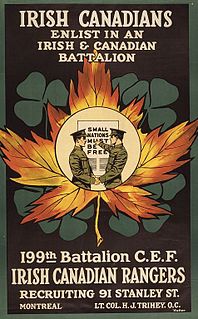
The 199th Battalion, CEF was a unit in the Canadian Expeditionary Force during the First World War.
The 216th (Bantams) Battalion, CEF was a unit in the Canadian Expeditionary Force during the First World War. Based in Toronto, Ontario, the unit began recruiting in early 1916 throughout Military District 2. After sailing to England in April 1917, the battalion was absorbed into the 3rd Reserve Battalion on April 29, 1917. The 216th (Bantams) Battalion, CEF had one Officer Commanding: Lieut-Col. F. L. Burton.
The 226th Battalion, CEF was a unit in the Canadian Expeditionary Force during the First World War. Based in Dauphin, Manitoba, the unit began recruiting in March of 1916 in the area of Dauphin and Minnedosa, Manitoba. After sailing to England in December 1916, the battalion was absorbed into the 14th Reserve Battalion on April 7, 1917. The 226th Battalion, CEF had one Officer Commanding: Lieut-Col. R. A. Gillespie.
The 229th Battalion, CEF was a unit in the Canadian Expeditionary Force during the First World War. Based in Moose Jaw, Saskatchewan, the unit began recruiting in early 1916 in southern Saskatchewan. After sailing to England in April 1917, the battalion was absorbed into the 19th Reserve Battalion on May 10, 1917. The 229th Battalion, CEF had one Officer Commanding: Lieut-Col. H. D. Pickett.
The 234th Battalion (Peel), CEF was a unit in the Canadian Expeditionary Force during the First World War. Based in Toronto, the unit began recruiting in the spring of 1916 in Peel County. After sailing to England in April 1917, the battalion was absorbed into the 12th Reserve Battalion on April 29, 1917. The 234th Battalion (Peel), CEF had one Officer Commanding: Lieut-Col. W. O. Morris.
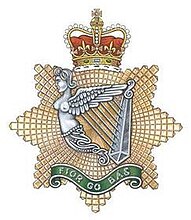
The 2nd Battalion, Irish Regiment of Canada is a Primary Reserve infantry regiment of the Canadian Army based in Sudbury, Ontario. It is part of the 4th Canadian Division's 33 Canadian Brigade Group.
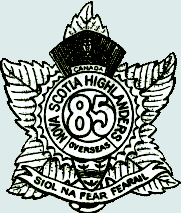
The 85th Battalion, CEF, was an infantry battalion of the Great War Canadian Expeditionary Force. The 85th Battalion was authorized on 14 September 1915 and embarked for Great Britain on 12 October 1916. Disembarking in France on 10 February 1917, it fought as part of the 12th Infantry Brigade, 4th Canadian Division in France and Flanders until the end of the war. The battalion disbanded on 15 September 1920. The battalion is most famous for capturing Hill 145 in their first battle. Today, the Vimy Memorial stands on Hill 145.

The Royal Rifles of Canada was a rifle regiment in the Canadian Army and fought alongside The Winnipeg Grenadiers in the Battle of Hong Kong during World War II.
Meek, John F. Over the Top! The Canadian Infantry in the First World War. Orangeville, Ont.: The Author, 1971.












